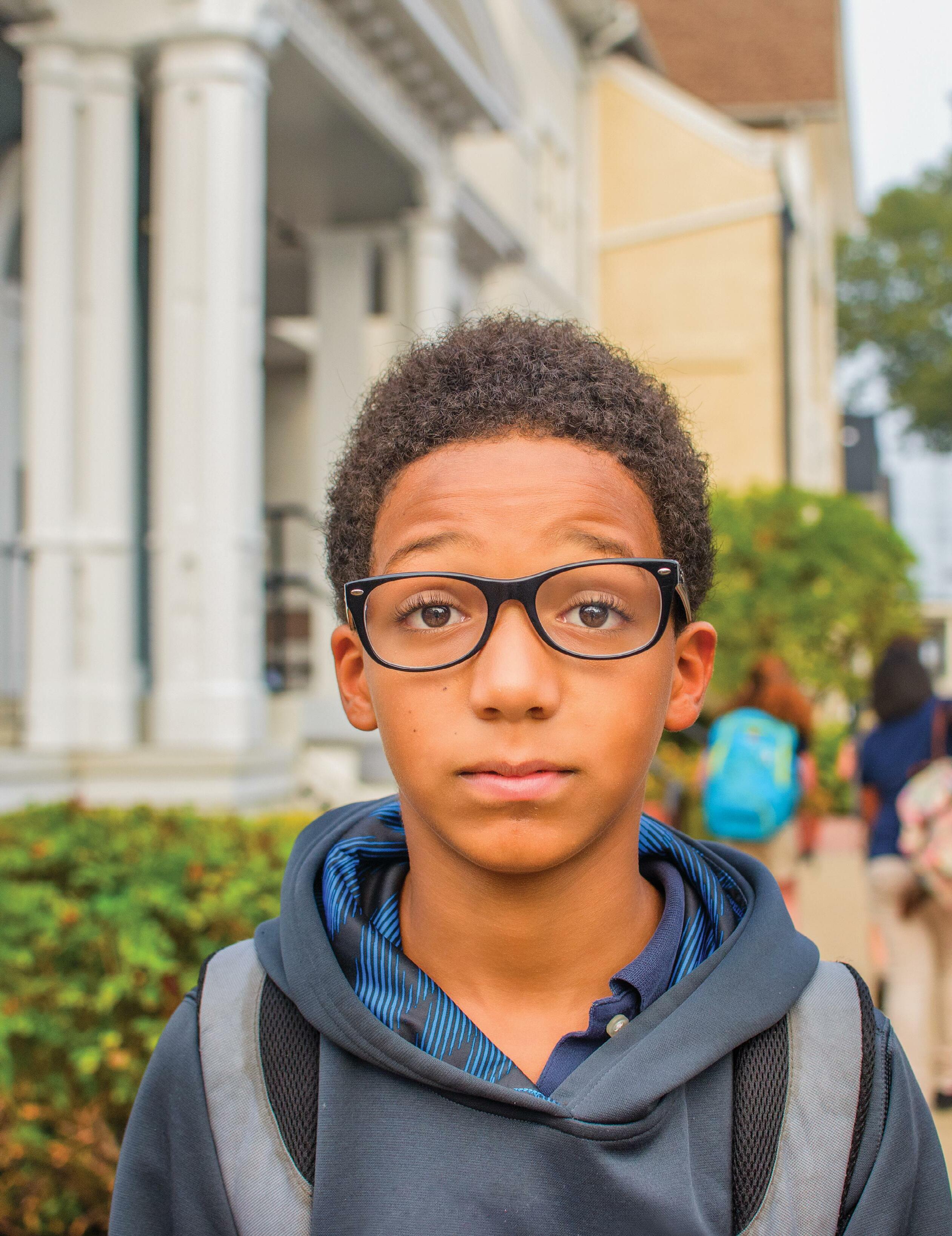
5 minute read
When Children Have Anxiety
My daughter was 9 years old when she had her first panic attack. She was trembling, out of breath and her heart was pounding. These symptoms persisted for almost 10 minutes and nothing I said or did could help her calm down. Because these symptoms occurred before her performance in a class play, I dismissed the episode as stage fright.
When she suffered the same symptoms a short time later, before a party at her school, I realized something was wrong. Especially when she told me what triggered her intense physical symptoms: She could not stop worrying that something bad would happen to me as I drove to her school.
After visiting the pediatrician, my daughter was diagnosed with Generalized Anxiety Disorder. She now sees a therapist and takes medication. She joined an anxiety disorder support group at her school, connecting with peers who understand what she’s going through. I also found support talking to other parents of children with anxiety disorders, making me feel less alone. Having some anxiety is normal for most kids. After all, what child doesn’t feel anxious
before taking a test, making a presentation in front of the class or trying out for a team? Some children, though, feel worry or fear constantly. According to the Mayo Clinic, anxiety disorders involve intense, excessive and persistent worry and fear about everyday situations. Such feelings of anxiety and panic can interfere with daily activities, are difficult to control, are out of proportion to the actual danger and can last a long time. The CDC reports that 9.4 percent of children ages 3–17 were diagnosed with anxiety in 2016-2019. That’s 5.8 million kids. Since the COVID-19 pandemic, the number of kids with an anxiety disorder has undoubtedly increased.

Types of Anxiety in Children According to WebMD, the most common anxiety disorders in kids include the following: • Generalized Anxiety Disorder (GAD) is constant worrying about a lot of different things out of proportion to the actual circumstance. • Panic disorders are characterized by sudden, intense fear that leaves a child feeling physically overwhelmed and out of control, even when there is no danger. • Separation anxiety is the fear that something bad will happen to a parent or loved one when the child is separated from them.
Separation anxiety is a normal developmental phase for babies and toddlers, but not necessarily for older children. • Social anxiety is extreme anxiety and fear of being embarrassed in social situations, like talking with classmates or answering a question in class. It is more than simple shyness. Anxiety Symptoms According to the CDC and WebMD, the most typical symptoms of anxiety disorders in children include: • Expressing worry or fear on most days (for weeks at a time) • Trouble sleeping, which may manifest in your child seeming sleepy or tired during the day • Difficulty concentrating or thinking about a problem over and over again • Unusually irritable and angry • Headaches • Stomachaches • Avoiding school or friends because worries are overwhelming • Trouble calming down after leaving a parent or loved one, or extreme homesickness
According to Jon Pak, executive director of Brain Balance San Diego in Carmel Mountain, things such as sensory processing, retained primitive reflexes and general imbalances in development can lead to anxiety or other regulation challenges. To explore the root cause of a child’s anxious behavior, visit www.brainbalancecenters.com.
How to Help The CDC recommends talking to your healthcare provider as a first step. A primary care doctor or mental health specialist can evaluate your child and ensure that your child’s symptoms are caused by anxiety and not another condition, such as trauma.
Cognitive behavioral therapy (CBT) and medication are the most accepted treatments to help children overcome severe anxiety according to the Anxiety Disorders Association of America. CBT teaches skills and tools to help children feel less anxious and fearful. Through CBT, my daughter learned to utilize tools like a “worry box.” She writes down her worry on a piece of paper, then stuffs the paper in a box. It is a tangible way to release fear.
Prescription medication may help. If this route is chosen, parents should work closely with a healthcare provider to manage the use of medication and monitor the child’s response.
Parents should let children know they are available to listen and be ready to do so whenever they are ready to talk. Kids with anxiety may be reluctant to share thoughts and feelings for fear of being misunderstood.
Anxiety is a treatable, manageable condition. As parents, we can help kids receive the tools, support and love they need to live healthy lives. v
Katy M. Clark is a writer and mom of two who celebrates her imperfections on her blog Experienced Bad Mom.
September 2022 • SanDiegofamily.com • 23





